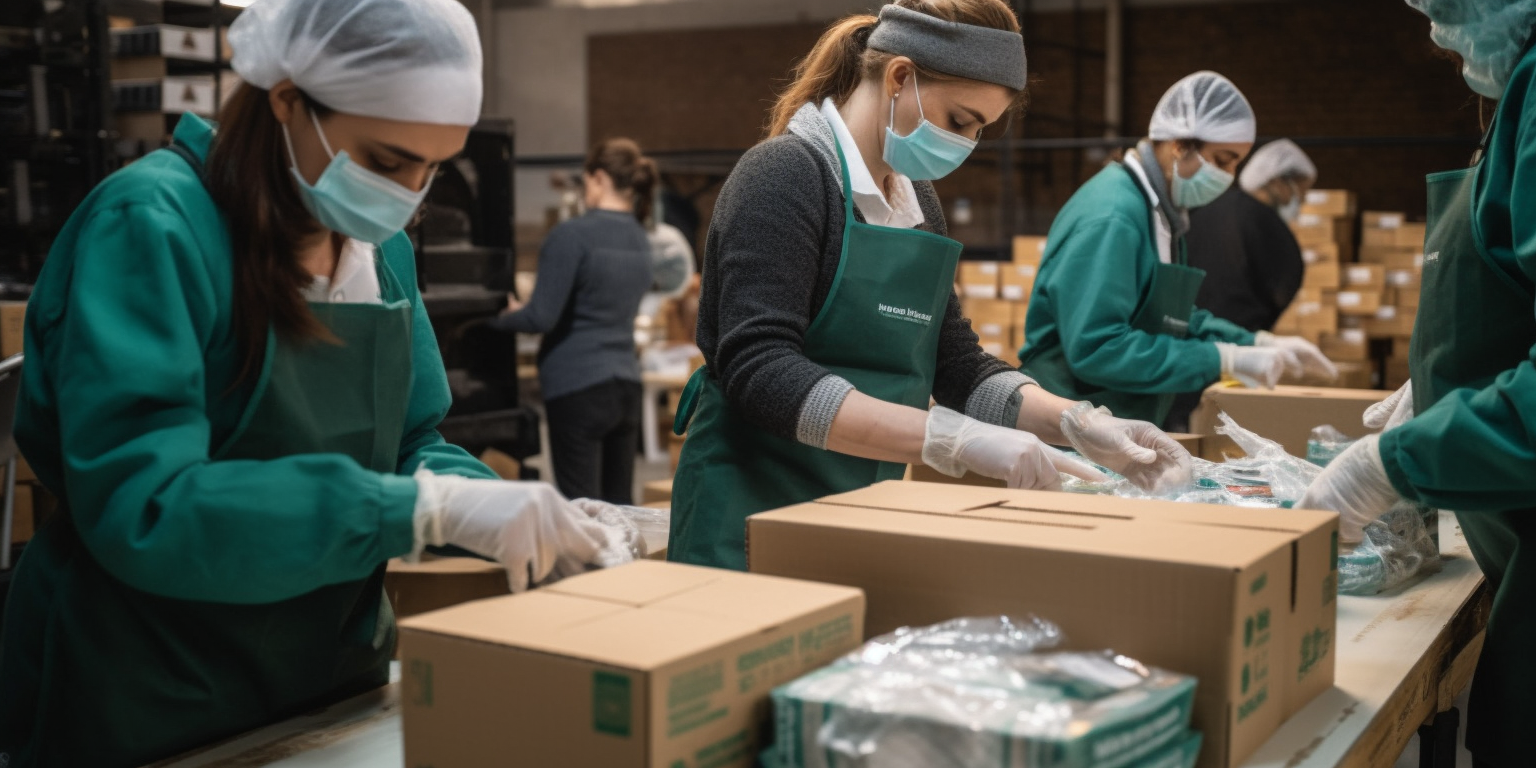
The Science of Food Storage: How Long Does Emergency Food Last?
The Science of Food Storage: How Long Does Emergency Food Last?
Emergency food storage is an essential part of emergency preparedness. In the UK, the risk of natural disasters, extreme weather conditions, and other emergencies necessitates the need for emergency food storage. However, to be effective, emergency food needs to be stored properly and have a sufficiently lengthy shelf-life in order to ensure its safety and quality when crisis occurs. In this article, we explore the science of food storage, and answer the question of how long emergency food lasts.
Introduction to Food Storage: Why It's Important
Emergency food can provide sustenance and nutrition during an emergency, ensuring that food is available even when food supply chain infrastructure is failing, which may be critical to survival. In addition, emergency food storage can provide a sense of security, ensuring that individuals and families can manage through an emergency without relying on external support.
Types of emergency food include canned goods, freeze-dried foods, dehydrated foods, and MREs (meals ready to eat). Each type of food has its own unique characteristics and shelf life, which we explore in more detail below.
Factors Affecting Food Shelf Life
Several factors can affect the shelf life of emergency food, including:
- Temperature and humidity are two of the most significant factors affecting the shelf life of emergency food. Food should be stored in a cool, dry place to avoid the growth of bacteria and mould. High humidity can cause spoilage and reduce the shelf life of food. Temperature fluctuations can cause damage to packaging and reduce the quality of the food.
- Oxygen exposure can also shorten the shelf life of food. Oxygen can cause food to become stale and lose flavour. In addition, oxygen can promote the growth of microorganisms that can spoil the food.
- Light exposure can cause food to degrade, as it can break down the nutrients and alter the flavour. This is why most emergency food is stored in opaque containers or packaging to protect it from light.
- Packaging materials can also affect the shelf life of emergency food. For example, plastic packaging can become brittle and break down over time, while paper packaging can absorb moisture and odours. Metal cans are often used for emergency food, as they are durable and can protect the food from external factors such as light and oxygen.
Shelf Life of Common Emergency Foods
The shelf life of emergency food varies depending on the type of food and the storage conditions. Here are some common types of emergency food and their shelf life:
Canned goods - Canned goods have a long shelf life, usually between 2 to 5 years. However, the quality of the food may degrade over time, particularly if the can is dented or rusted.
Freeze-dried foods - Freeze-dried foods have a shelf life of up to 25 years, making them a popular choice for emergency food storage. However, it's essential to store freeze-dried food in a cool, dry place to ensure its quality.
Dehydrated foods - Dehydrated foods have a shelf life of between 1 to 2 years. However, the quality of the food may deteriorate over time, particularly if it is exposed to light or moisture.
MREs (meals ready to eat) - MREs have a shelf life of between 5 to 10 years, depending on the storage conditions. MREs are a popular choice for emergency food storage, as they are pre-packaged and require no preparation.
For further information about ambient foods that are ideal for including in an emergency food supply, including their typical shelf-lives, we suggest you visit Building Your Food Stockpile: 50 Long-Life Foods To Include.
How to Store Emergency Food
Proper storage is essential to ensure the safety and quality of emergency food. Here are some tips for storing emergency food:
- Keep food in its original packaging
- Store food in a cool, dry place, away from direct sunlight and heat sources.
- Store food in airtight containers to prevent exposure to oxygen.
- Ensure food is protected from insects, rodents and other pests by storing in secure containers.
- Rotate emergency food regularly, using the oldest items first and replacing them with fresh supplies.
- Keep an inventory of emergency food to monitor its shelf life and to ensure that you have enough supplies.
Testing the Shelf Life of Emergency Food
To determine the shelf life of emergency food, manufacturers will have had to conduct regular testing. Testing involves exposing the food to different storage conditions and monitoring its quality over time. This will have helped to determine how long the food can be stored before it becomes unsafe or loses its quality - and results in the formal addition of a 'Best Before' date.
Methods for testing food shelf life include sensory analysis, chemical analysis, and microbial analysis. Sensory analysis involves testing the food for changes in taste, texture, and appearance. Chemical analysis involves testing the food for changes in nutrient content, while microbial analysis involves testing the food for the growth of microorganisms.
If you inadequately store your emergency food supply you may find that the food spoils prior to its official Best Before date - so we encourage occasional assessments to ensure that it remains safe and nourishing. Any expired food will need to be replaced as soon as possible.
Conclusion: The Importance of Emergency Food Storage
Emergency food storage is a critical aspect of emergency preparedness. Proper storage is essential to ensure the safety and quality of emergency food. By following the tips and advice in this article, individuals and families can be prepared for emergencies and have the peace of mind that comes with being self-sufficient in a crisis.
Suggested Articles
Emergency Food Supply for Multi-Day Power Outages: A Comprehensive Guide for UK Residents
Power outages can strike at any time, and with an increasing demand for electricity and a more volatile climate, the ...
The Role of Emergency Food in Pandemic Preparedness: Lessons from COVID-19
The COVID-19 pandemic has laid bare the vulnerabilities of our global food supply chains and has demonstrated the nee...
Preparing for the Worst: The Top Emergencies That Require a Food Supply
As the saying goes, hope for the best but prepare for the worst. In the UK, emergencies can come in many forms, from ...




